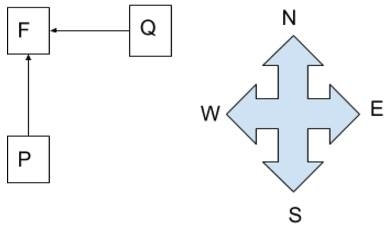In this article, we will discuss crucial topic of reasoning section, Data Sufficiency. This section aims at testing your reasoning and logical ability.
So let's have a look at the approach you should follow while solving these questions -
The first and foremost thing to do is go through the complete question properly first. You’ll be able to make out what data is required to arrive at the answer to the question and then proceed to the statements that have been provided.
Try to recall if you have approached the similar question in past and go ahead and follow the same approach while taking the exam.
Remember, you don’t have to solve the question completely.
All you need to do is figure out if the data that has been provided to you is sufficient to answer the question. This saves the time that is spent on calculations or the complete solution.
Analyse each statement separately first.
If both the statements aren’t providing sufficient information to answer the question, then take the details provided in both the statements and check if the information together is sufficient to answer the question.
Comprehend the language of the question properly.
Don’t make assumptions here. Stick entirely to the information that is provided in the statements.
Do not mark the answer after testing just one statement. For instance, even if you conclude that the data in statement 1 is sufficient to answer the question, do not forget to check for the other statement.
Use the process of elimination of options to narrow down the possible answers. For instance, if data in statement 1 is sufficient to answer the question, you only need to check for the second statement. Combining the information of the two statements and checking if it would be sufficient to answer the question won’t be required here.
To make sure that you don’t spend too much time on these problems, practice these types of questions thoroughly.
Now to have a clear picture of the above tips, let us consider the following example -
Consider the question given below and the statements numbered I and II that are provided and answer accordingly.
The data in Statement I alone are sufficient to answer the question, while the data in Statement II alone are not sufficient to answer the question.
The data in Statement II alone are sufficient to answer the question, while the data in Statement I alone are not sufficient to answer the question.
The data in Statement I alone or in Statement II alone are sufficient to answer the question.
The data in both the Statements I and II are not sufficient to answer the question.
The data in both the Statements I and II together are necessary to answer the question.
Question - Tower 'P' is in which direction with respect to tower 'Q?
Statement I. P is to the west of H, which is to the South of Q.
Statement II. F is to the west of Q and to the North of P.
Now let us first go through the first statement,

We can clearly see that P is in the South - West direction with respect to Q i.e. the data in Statement I is sufficient to answer the question. But we can’t conclude our answer here. We need to check the second statement as well. As per the information of the second statement, we can again figure out the position of P with respect to Q.

Hence the answer to this question will be,
(C) The data in Statement I alone or in Statement II alone are sufficient to answer the question.
Key Takeaways from Data Sufficiency Problems
Understand what is given in the question, reading the statements properly will provide you with some clues and strategy which you should write down as soon as it strikes you.
Organize the strategies identified on the basis of data points given in the main statement.
The questions may be based on various topics, For instance, blood relation, or ranking or direction based problems. Remember, it’s just the topics you already know, presented in a different form.
You may be more than 2 statements in the question. Don't let the size of the question scare you, the approach to solve the question still remains the same. So practice well.

No comments:
Post a Comment